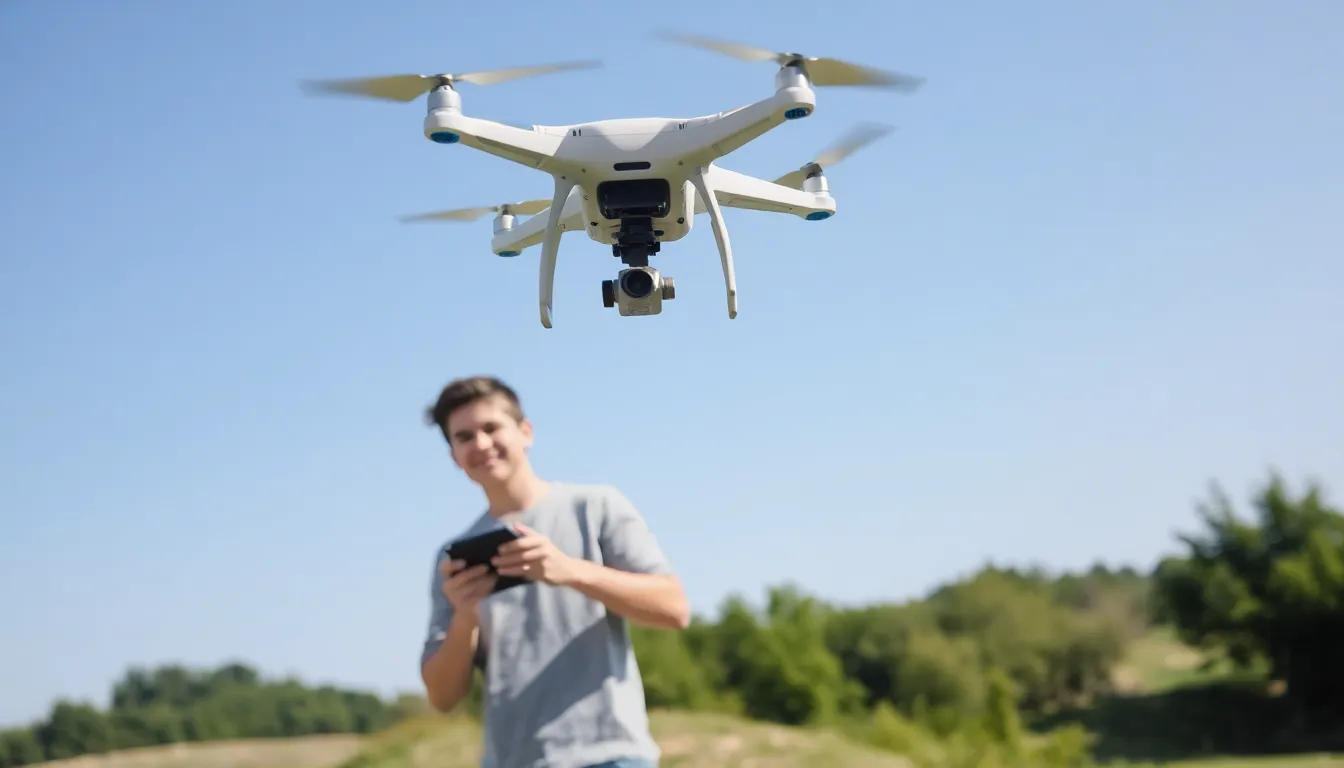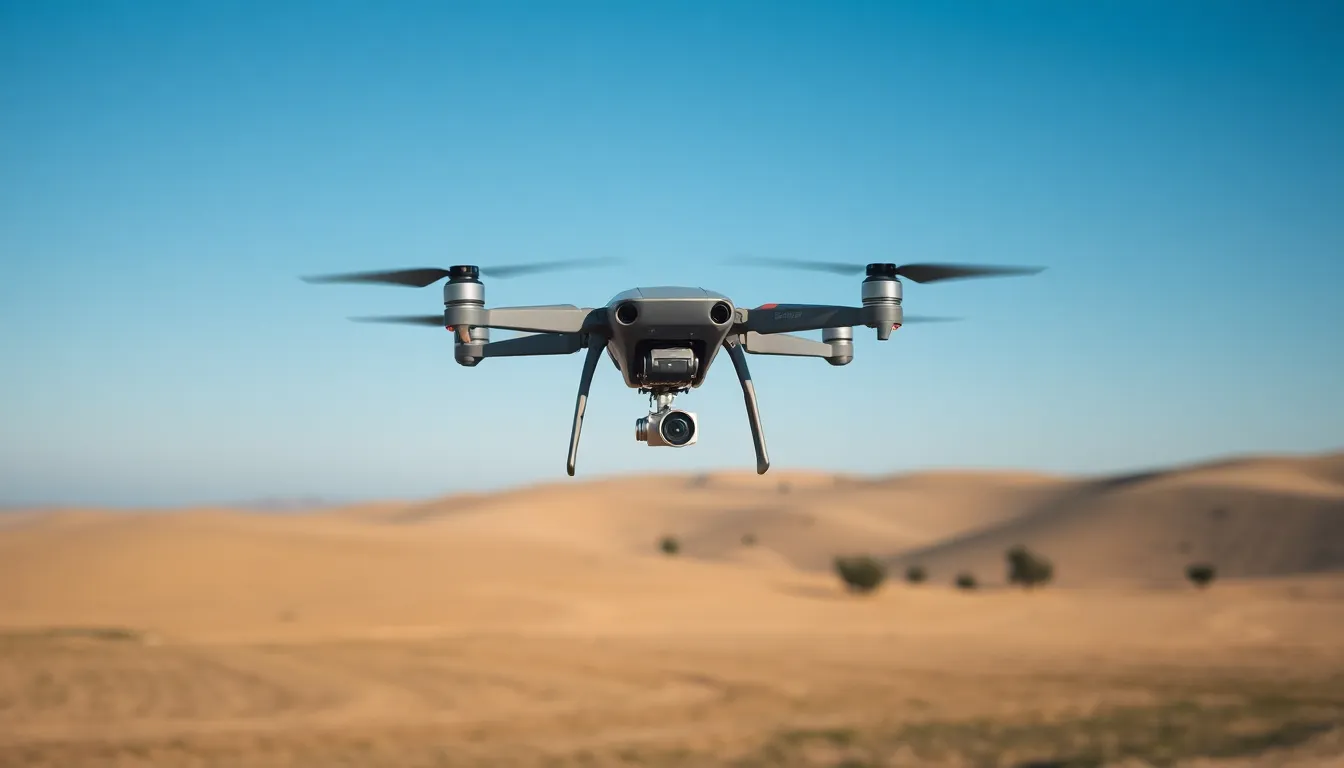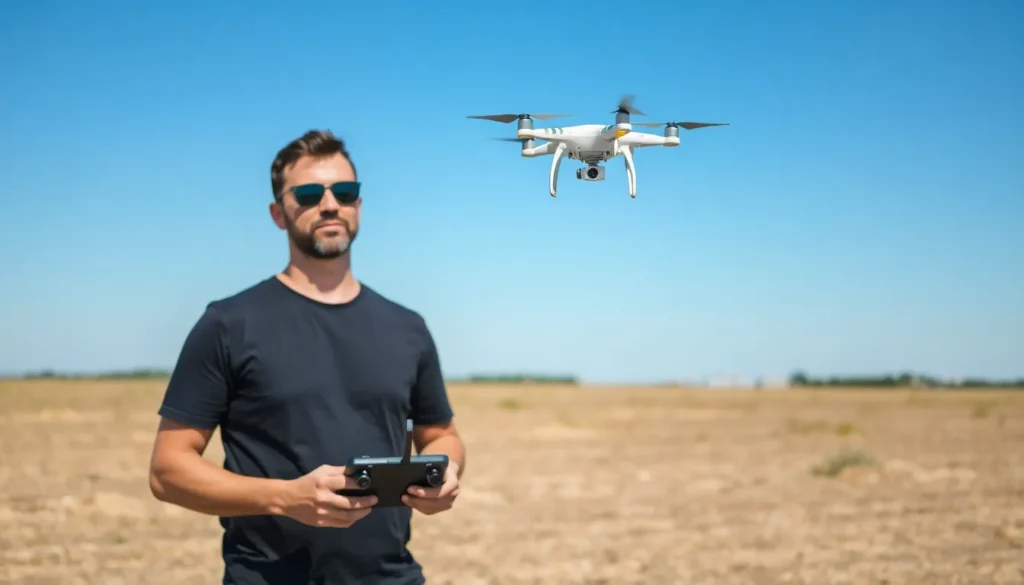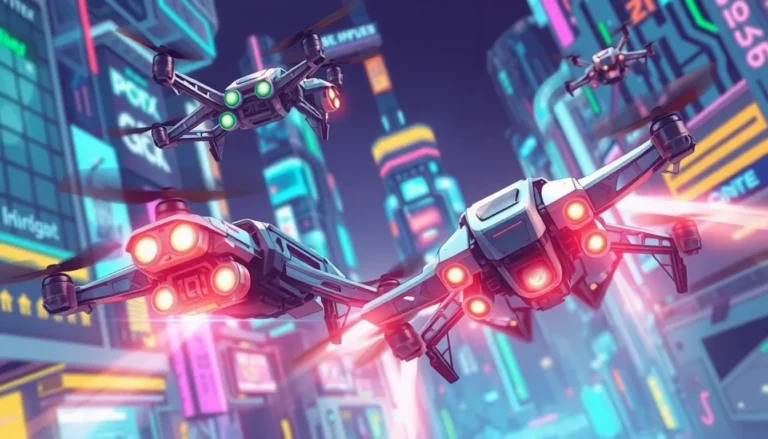Table of Contents
ToggleImagine a world where your drone doesn’t just hover around the backyard but soars across vast landscapes like a bird on a mission. The operational range of a drone is its secret superpower, determining just how far it can fly before it transforms into a very expensive paperweight. Understanding this range isn’t just for tech geeks; it’s crucial for anyone looking to unleash the full potential of these flying marvels.
Overview of Drone Operational Range
Drone operational range defines the maximum distance a drone can travel from its pilot or control point. This distance varies significantly based on several factors, including the drone model, battery capacity, and environmental conditions. For example, consumer drones often have an operational range between 1 to 5 kilometers, while professional models can reach ranges exceeding 10 kilometers.
Wireless communication technology affects range as well. Drones equipped with advanced communication systems can sustain control and video transmission over greater distances. Frequencies used also play a role, with the 2.4 GHz band typically offering longer ranges compared to the 5.8 GHz band, which may provide better data rates.
Environmental factors, such as terrain and obstacles, influence operational range. Urban settings with buildings can obstruct signals, reducing effective range. Conversely, open areas tend to facilitate longer distances. Weather conditions, like strong winds or rain, also impact a drone’s ability to maintain its operational parameters.
Flight regulations establish limits as well. Many jurisdictions impose restrictions on the maximum range to ensure safety. Pilots need to remain within line of sight of their drones in many regions, directly affecting operational range. Thus, understanding local laws is crucial for drone operators.
Battery life is another critical component. A drone’s flight time correlates with its range; longer flights consume more energy. Different battery types and capacities deliver varying durations of operation, influencing how far a drone can travel effectively.
Operational range encompasses multiple elements, including technology, environmental influences, regulatory constraints, and battery performance. Each factor contributes to the overall capability of a drone, shaping its effectiveness in various applications.
Factors Affecting Drone Operational Range


Understanding the factors influencing a drone’s operational range is crucial for maximizing its efficiency and effectiveness. Key elements include battery life and technology, environmental conditions, and payload and weight.
Battery Life and Technology
Battery life directly impacts operational range. Longer flight times allow for greater distances, with lithium polymer batteries commonly used in drones due to their efficiency. Flight times typically range from 20 to 30 minutes for consumer models, while high-end drones can achieve durations of up to 60 minutes. Also, the drone’s technology plays a role; advanced power management systems optimize energy use and extend flight endurance significantly. In practical terms, a drone designed with energy-efficient components and technologies will outperform those that lack these enhancements.
Environmental Conditions
Environmental factors significantly affect drone range. Wind speed, temperature, and humidity can either hinder or enhance a drone’s performance. High winds often lead to increased energy consumption, shortening operational range, while clear skies facilitate maximum distances. Urban landscapes impose additional challenges, including signal interference and obstacles that disrupt communication between the drone and the pilot. Drones flying in open areas experience fewer barriers, promoting longer operational ranges. Weather conditions serve as essential considerations for any flight plan.
Payload and Weight
Payload capacity influences drone range. Heavier drones consume more energy to maintain flight, which decreases operational range. Each additional gram reduces efficiency, so selecting the right payload is crucial. It’s crucial to know that most drones specify a maximum payload weight, and exceeding it results in shorter flight durations. Lightweight accessories and streamlined designs increase effective ranges significantly. Thus, balancing the necessary payload with the drone’s capabilities enables optimal performance, promoting comprehensive operational effectiveness.
Types of Drones and Their Ranges
Understanding different types of drones and their operational ranges helps in selecting the appropriate model for specific needs.
Consumer Drones
Consumer drones typically offer a range of 1 to 5 kilometers. These drones are ideal for hobbyists who seek to capture stunning aerial photos or videos. Popular models include DJI Mini and Mavic series, which leverage efficient battery technology. While they excel in user-friendly features, flight times range from 20 to 30 minutes based on battery type and weight. User experience also varies depending on environmental conditions and signal strength.
Commercial Drones
Commercial drones often boast operational ranges exceeding 10 kilometers. These models cater to industries like agriculture, photography, and surveying. Drones such as the DJI Matrice series harness advanced communication systems for real-time data transmission. Battery life extends up to 60 minutes, allowing extensive flight operations in open areas. Payload capabilities determine their efficiency in different applications, as heavier loads may limit distance.
Military Drones
Military drones command impressive operational ranges, often exceeding 100 kilometers. These unmanned aerial vehicles facilitate surveillance, reconnaissance, and combat missions. Models like the MQ-9 Reaper utilize advanced technology for long-distance communication and control. Battery efficiency plays a crucial role in maintaining flight duration, which can exceed 14 hours under optimal conditions. Ranges allow for border patrol and deep reconnaissance strategies without compromising safety.
Enhancing Drone Operational Range
Expanding a drone’s operational range involves innovative strategies and technologies. Battery solutions and effective flight planning significantly improve overall performance.
Advanced Battery Solutions
Lithium polymer batteries enhance flight duration due to their lightweight properties. Many consumer drones utilize this type, achieving efficient energy consumption. Other options, like lithium-ion batteries, offer longer cycle lives, making them suitable for extended use. Advanced battery management systems help optimize energy usage and monitor battery health, enabling pilots to maximize flight time. Companies continually develop newer battery technologies, such as solid-state batteries, promising even greater capacity and reliability. Improved charging solutions also reduce downtime, allowing for quicker turnarounds between flights.
Flight Planning and Optimization
Effective flight planning is crucial for extending operational range. Utilizing mapping software allows pilots to identify optimal flight paths while avoiding obstacles. Pre-flight checks ensure all systems function correctly, reducing the likelihood of in-flight failures that could limit range. Weather considerations play a vital role, as pilots can reschedule flights based on forecasted conditions. Strategies that incorporate energy-efficient flying techniques, like maintaining a steady altitude and speed, further maximize battery life. Drones programmed with autonomous flight capabilities can optimize routes in real time, enhancing both range and efficiency during missions.







